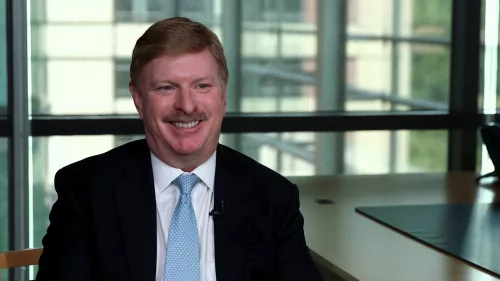Jeff Keisling became the CIO of Pfizer after the company’s 2009 acquisition of Wyeth, where he’d held the same position. Since then, he has overseen a complete transformation of the combined company’s business technology department—taking Pfizer from a position as one of the highest spenders on IT as a percentage of revenues in the pharma business to one of the lowest. Now SVP and senior information officer at Pfizer, Jeff spoke with Craig Lawton, a senior partner and managing director in The Boston Consulting Group’s New York office, about the factors behind the company’s IT transformation and the tremendous value that transformation has created. The following is an edited version of that conversation.
Jeff, thanks for taking the time to talk about the merger of Pfizer and Wyeth. Based on industry benchmarks of the large global pharma companies, Pfizer’s built a low-cost and high-capability IT organization. What have been the key enablers of your success?
We have an exceptionally talented team that is deeply integrated with the business lines. They have seats at the table. That's been a core part of our strategy, and the way that we select those leaders is mutual. It's a 50% share vote that I have, and 50% share vote of our business line leaders. We have those leaders now at multiple levels. It's not just at the top tier of the company, which I'm very proud of. It's now just the way that we operate. It's just a natural thing that we do, where, many years ago, I had to pitch that, or ask permission, or convince people to do it. It's just the way things now happen at Pfizer.
We started in a position where we were a high spender. As a percent of revenue, we were at least among the highest spenders as a percent of revenue in the pharma industry. We had much broader aspirations, or better aspirations than that. Today we find ourselves, for large pharma, to be among the lowest spenders to revenue ratio players, if not the lowest.
You have recently completed an on-time and on-budget, single-instance, global SAP rollout. That's a mouthful. What are the keys to pulling that off?
The kernel of the ERP strategy was the same kernel that we've used repeatedly over 40 times with our enterprise systems approaches. And that is, that it's not an IT project.
We started very strongly with business leadership, business ownership, and an ownership culture that we have at Pfizer in general. So, a lot of people would say, "good governance." Well, we have that. That's not enough, in my view. We want people that own the results of the implementations. And not only do they participate, or tell us what they need, or what the requirements are in very traditional IT terms, they're a full-time part of the team. They are accountable for the results.
Now that you have an implemented, global, single instance of SAP, where do you see the business value coming from, and how do you capture it?
Again, very proud of our ERP team, combined with the business leaders around the world that have been a part of this, both in the markets and in the plants, the supply chain, procurement. So this is a very large-scale, very large-scope ERP program. It wasn't just finance, or it wasn't just manufacturing, like so many are. This is truly ERP, first of all. That added some challenge and some complexity to it.
What I can say is, we set out a budget and a set of economic goals to attain throughout the program's life. We report out on those things, up to our audit committee at the board, at least two times per year. In the early stages of the project, four times per year. Very clear and transparent accountability, as I mentioned before.
I'm proud to say that we have blown away the economic value that we originally set out. And we have maintained the budget over a multiyear program.
How have you approached balancing building those new capabilities, like digital and data analytics, while continuing to bring down IT spend as a percent of revenue?
Key to our ability to innovate, while we drive value from a cost perspective, we consider to be an “and” proposition versus an “or proposition. At the center of that is really the confidence that we have with our business partners, our business lines, research, manufacturing, and our functions throughout the company. If you deliver on your commitments, you keep your promises, you deliver on those values, you earn the right to have the conversation to be a thought leader. If you don't get those fundamentals right, I believe, you stay in the world of infrastructure, you stay in the world of operational acuity. And we've been able to move the conversation beyond that.
So I'd say our leadership team, and again leaders at all levels, are comfortable with being uncomfortable. That doesn't make this easy. It's very easy to be dismissive and say, "As a leadership team, we've already done that. We've already touched that ground. We're past that, we have to find new ideas." And I think that's a self-defeating proposition. We ran the table. So we looked at everything from top to bottom, stratified it, even things that we thought that we had passed over, finished. We continuously looked at the next opportunity.
Now we realized that the home runs, per se, were pretty much consumed in the first three, four, five years of the transformation. So we got very comfortable looking for singles and doubles, and maybe an occasional triple, which means we had to do more of them to get to the target. Again, proud to say that we've never missed.





